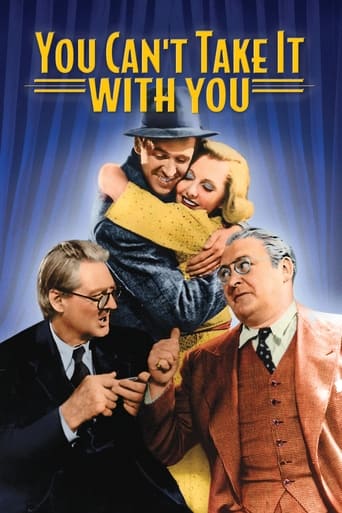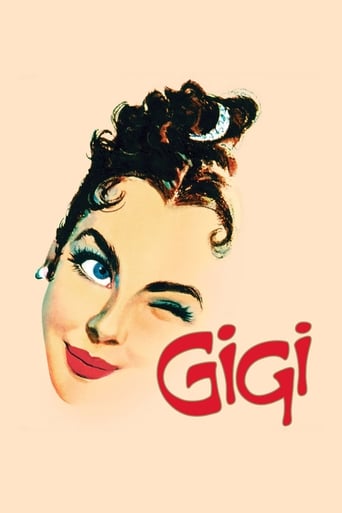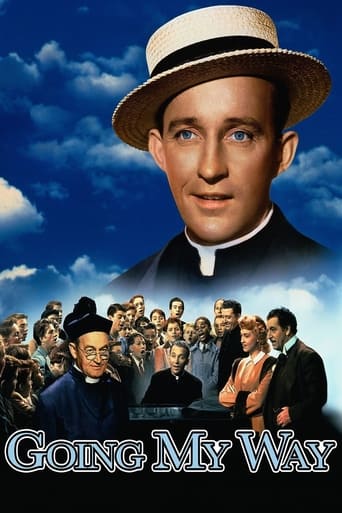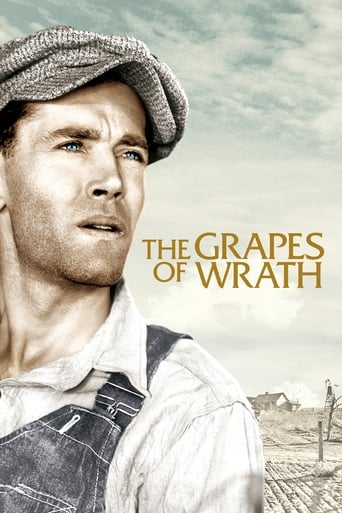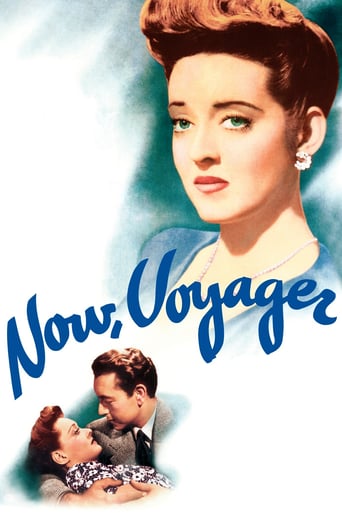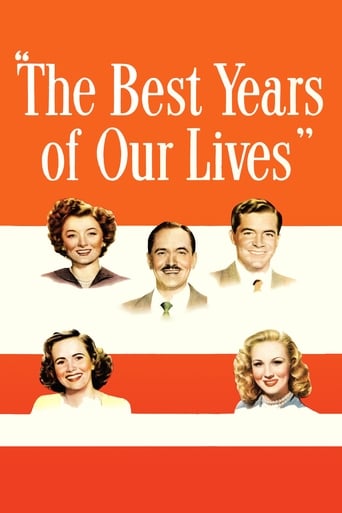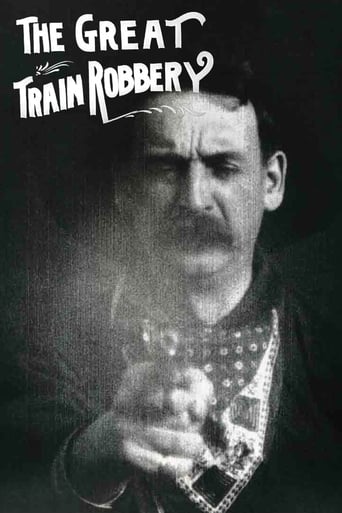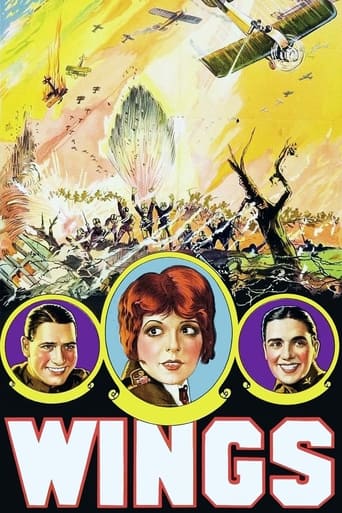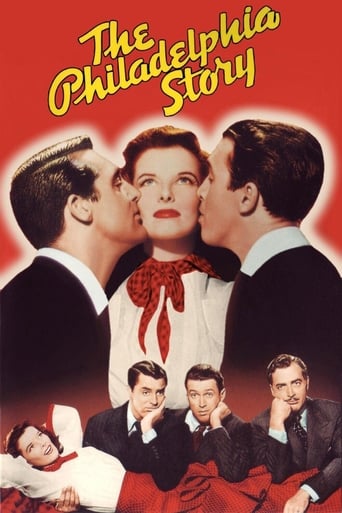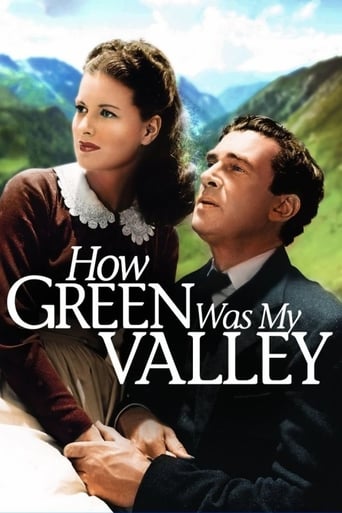


How Green Was My Valley
A man in his fifties reminisces about his childhood growing up in a Welsh mining village at the turn of the 20th century.
-
- Cast:
- Walter Pidgeon , Maureen O'Hara , Anna Lee , Donald Crisp , Roddy McDowall , John Loder , Sara Allgood


Similar titles





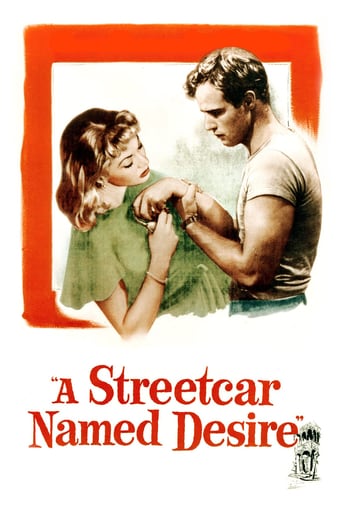
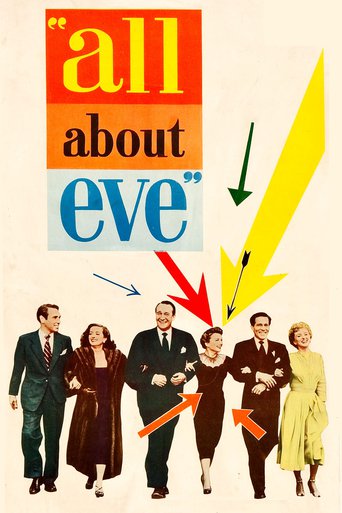
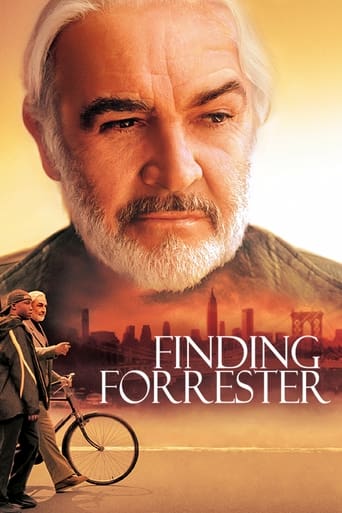

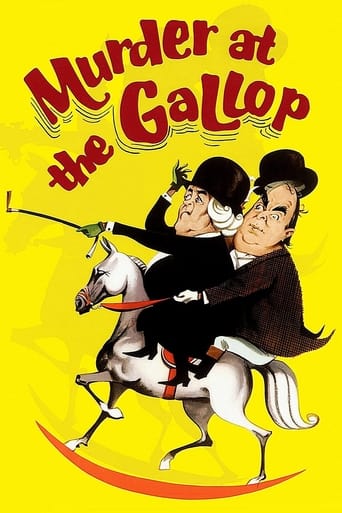
Reviews
Waste of time
Crappy film
Unshakable, witty and deeply felt, the film will be paying emotional dividends for a long, long time.
Let me be very fair here, this is not the best movie in my opinion. But, this movie is fun, it has purpose and is very enjoyable to watch.
Admittedly I watched this with the idea that this movie was such a classic and had great performers in it. It wasn't quite as good as I had expected.People have panned this for the performers not having proper Welsh accents or the scenario looking too much like California. But the truth is that even without World War Two going on, the Hollywood film industry was actually in bad financial shape during the Great Depression like everybody else, and it would have been too expensive and difficult to make everything properly look and sound like Wales, let alone go on location. The idea was to show essentially a poor mining town, even if the settings didn't match the interiors of actual Welsh houses.I have not seen the book, so I cannot say how well the movie follows it. Admittedly the major problem was that the script was rather disjointed. It starts off with the protagonist talking about leaving his village and describing how it was when he was growing up. The first part has the miners going on strike when their wages are cut, and the father denounces the idea of his sons joining a labor union (though not explaining why). Later on, the mine owner's son wants to marry the family's daughter, and she is in love with the local preacher but marries the son anyway. Huw, the son who tells the story, is sent to the local school, gets bullied by classmates and teacher, fights back, and eventually graduates with honors, but chooses to work in the mine. That is never explained either.The movie's fundamental problem is that things happen one after another, but without explanations about people's attitudes and why they are what they are, or why people make certain choices which seem illogical. In the end, we don't even know why the protagonist finally leaves the valley when he does, or what he plans to do.
Interesting look at life in Welsh coal-mining town in the early- 1900s.The story of a family, the Morgans, who live in a Welsh coal-mining town, told through the eyes of the youngest son, Huw (played by a 12-year old Roddy MacDowall). The father and four oldest sons all work in the colliery. Pretty much everything centres around the colliery - it is the life blood of the town, and the source of pain, ill-will and death. In addition, we see the relationships between the people in the town, how they develop and change. An interesting drama, showing the social impact on a town when it is dependent entirely on a single industry. The relationship side is interesting too. However, in trying to cover as much of what happens in the town as possible, there is a lack of focus. While the ending is reasonably profound, a much greater point could have been made. The landing is a bit soft.Great performances all round.How Green Was My Valley went on to win the 1942 Best Picture Oscar, beating out Citizen Kane (amongst others) to the award. Not that it is better: it can probably thank William Randolph Hearst's campaign against Citizen Kane for the award.
What stays with me is the singing. They sing on their way to work. They sing on the way home from work. They sing at weddings, funerals, church services. They sing during downtime, during happy occasions and during sad occasions. Their singing comes in the form of choral arrangements that doesn't come from formal practice but from their very souls. When they sing it comes from the echoes of the past, of the heritage passed down from their fathers. Their singing sweeps across the hills and becomes part of their daily breath.John Ford's adaptation of Richard Llewellyn's book How Green Was My Valley is a movie about the hardships in a small 19th century mining town in Southern Wales, in which the people live in poverty and grief yet they sing all the time. Were it not from the singing this might be just another good-looking memoir, so the singing gives it texture.The movie is a memoir told from the point of view of a man who is about to leave his native land. He tells us his story in flashbacks so that we understand where he came from and why he is eventually driven to vacate. This is a mining town, but it has become so industrialized and over-populated that the place no longer resembles the land of his formative years. The story is told from the point of view of the young Huw (Roddy McDowell) as he watches the hardships within his own family. His proud father (Donald Crisp) and his mother (Sara Allgood) struggle against generational differences to hold their family together. Among the siblings are Ivor (Patric Knowles), Huw's older brother, and Angharad (Maureen O'Hara) his older sister. There is also Bronwyn, Ivor's wife whom Huw harbors a serious crush. And there's Mr. Gruffydd (Walter Pidgeon) a good-hearted minister who marries Huw's sister.The problems within the family have to do with the children's restlessness, and their desire to escape the generational heritage to find their own way in the world. The first cracks begin to form when the mine worker's pay is cut and they go on strike. The boys in the mine want a strike, but Mr. Morgan is supports the mining company and, for a short time, becomes the town pariah. This is the beginning of their problems and won't end until the Morgan children are scattered across the globe.The heritage given to the children of this town is to work in the coal mines. Everyone has their problems, whether they be marital strife, accusations by the church or simply a matter of personal difficulties that turn into life-long grievances. This is not a happy story to say the least. Even little Huw has his problems at school where an egotistical teacher makes him humiliates him in front of the class because of his low social standing.The narrative given in How Green Was My Valley feels more like pieces and short stories rather than one continuous thread. It looks and feels like pieces of memory and that would be fine if we felt any real connection with the characters. We can't help but feel for them, but while we understand their circumstances, the characters remain sort of unknown to us. We feel the texture of their location and their heritage, but the individuals are missing. There are things in the movie that work. John Ford creates a sense of time and place and of memories. We feel that these are events that are being looked back on, but something in the intimate detail is simply not there. We reach for the emotional pull but our hands grasp at empty air.Possibly for that reason, the film's historical legacy is not so great. Despite being acclaimed at the time, earning ten Oscar nominations and taking home the prize for Best Picture, How Green Was My Valley has more or less faded into obscurity. It is rarely screened on television except in the occasional annual Oscar marathon and even then only rarely does it show up. That could be because the film doesn't really reach out to the viewer. The involvement factor remains somewhat at arms-length. Well-made as it is, the movie feels like homework. It is not the first John Ford movie that you reach for or even the second or third or fourth. This is a film with just as many things that work as things that don't. There are elements that stay with me, but as a whole, it doesn't.
My observations: Beautiful Maureen O'Hara. Talented Roddy McDowall. Poignant performances by Donald Crisp and Sara Allgood. Rhys Williams very good; I also saw him in "The Corn Is Green", with Bette Davis. Shields and Fitzgerald also in "The Quiet Man", and so is Maureen O'Hara. Walter Pidgeon very funny later in "Julia Misbehaves" (Greer Garson), where Walter is upstaged (smacked around?) by a trained seal. Beautiful Welsh singing. Makes me think of their Eistydfodd (sp.?) annual singing contest. Gritty, scary mine sequences. That flooding gave me the creeps.Lovely fake-Welsh village. So what about the fakeness and fake backdrops, etc.? Saves a ton of money, and besides the British Isles were all involved in that war business. Not good to have Nazis attacking John Ford's film crew if he had shot in Wales. Crappy husband Maureen married, but beautiful home and clothes she got ahold of. Still, there was nothing good about being separated from her true love, Walter Pidgeon. You have to remember that Walter would co-star with at least two beautiful women, Greer Garson and Maureen O'Hara. Walter (Gruffydd) gives their comeuppance to a whole church-full of gossipy hypocritical nitwits out for blood, even though they don't get it and it's over their cotton-filled heads. It looks as though very few of them have any personal romantic notions, so of course they would be jealous of Maureen and Walter, lol. (Does "church lady" ring a bell?).Two movies I am reminded of here. "The Corn is Green" (already mentioned) is set in Wales, and deals with coal miners and their lack of formal education. "Corn" has a central young male character "Morgan Evans" who tries to get formal education. IN "HOW GREEN" THE FAMILY NAME IS MORGAN, AND ANGHARAD IS MARRYING "MR. EVANS". Rhys Williams is assistant to the schoolmarm (Bette Davis) in "Corn". The second movie is "The Little Minister" (1934), where Katharine Hepburn (wealthy woman in disguise as a gypsy) is in love with the new minister (John Beal). Apparently her father/benefactor wants her to marry someone else, but she has her eye set on Reverend Dishart. I thought of this when I saw Angharad (Maureen) in love/attraction with Gruffydd/Walter.One more thing: One of the "gossips" in "How Green Was My Valley" was portrayed by Mary Gordon, who portrayed Nanny Webster (older, wise woman) in "The Little Minister". I recognized Mary's face right away.The mine tragedies in this movie are horrendous, yet believable. Even though I know it is all fake, it is very realistic and brings horror and painful watching.Talk about painful watching, when I saw Huw/Roddy getting beaten up by the young tough boys, I wanted to stop recording and erase this movie. Getting treated so badly by the schoolmaster was also pretty evil. Finally, I forced myself to continue watching. When Rhys Williams and Barry Fitzgerald descend upon the schoolmaster and give him a taste of his own medicine I thought that it was an hilarious scene. I was able to finish watching the movie.10/10

